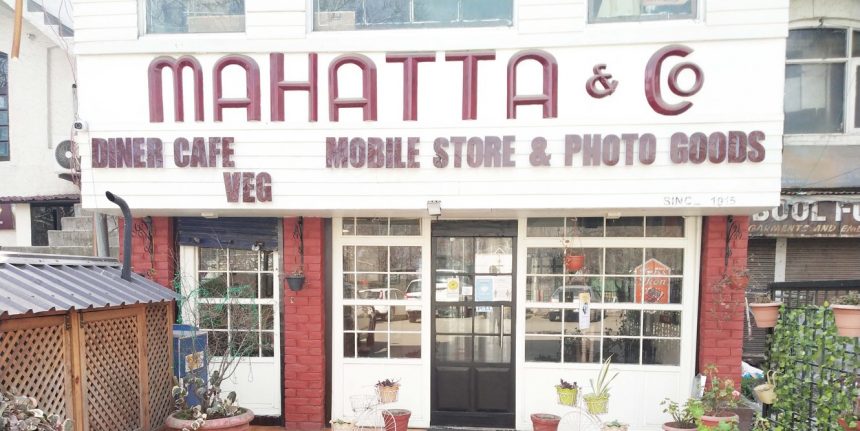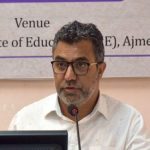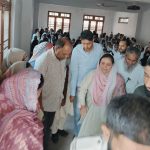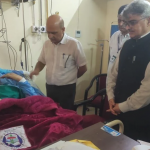Srinagar, Feb 20: Kashmir’s iconic photography—Mahatta & Co studio that captured over 100 years of the valley’s history is now aiming to open the first photo museum in the country.
Set up in 1915 by self-taught photographers, Amarnath Mehta and his younger brother Ram Chander Mehta, who landed in Kashmir from the Gurdaspur district of India, had learned photography from British army men in Dalhousie, Himachal Pradesh.
Initially, they started their shop inside a houseboat near Amira Kadal. In 1915, Mehta brothers shifted to Bund. After settling down, they panned their business to Rawalpindi, Sialkot, Lahore, Murree, Gulmarg, Pahalgam, and New Delhi. They continued their business at most of these places until the partition of 1947.
At Bund, the studio quickly gained popularity among the people and became one of the premier studios in the valley. The studio was mostly patronized by the elite: Englishmen, Royal people, residents, and visitors. In the 1920s, it was renamed as ‘Mahatta’ to make it more pronounceable from the erstwhile name Mehta and Co.
The Mehta brothers were pioneers in branding too. They used to sell prints, slides, and postcards of scenery, which was rare at that time. But more important was perhaps their documentation of people and political events, which made the studio prominent. Many tourists who would travel to Kashmir would end up at Mahatta Art Studio for their unique portraits.
In a conversation with Rising Kashmir, Anita Mehta 70, wife of late RC Mehta, who now looks after ‘Mahatta & Co’ in Srinagar said the studio was set up by his father-in-law.
“This studio has its own legacy and its lenses captured the fast-changing scenario of Kashmir during turbulent times,” she said.
“Kashmir studio of ‘Mahatta’ became popular in the British era. That time our family opened its many sub-branches in Pahalgam, Gulmarg, which were shortly closed,” she said.
Anita said while Rawalpindi and Murree branches were closed after the partition. Following this, Mahatta studio was set up in New Delhi in 1951 which is still functional.
Most of their family members were in the photography profession that is why it survived. From political history, scenic beauty to Kashmiri traditional weddings, they captured it all.
They were also official photographers of Maharaja Hari Singh—the last ruling Maharaja of the erstwhile princely state of J&K and his collections have been preserved.
Anita said they have a collection of iconic old cameras and they are still used in the studio. She said some people still prefer to keep those ‘black and white’ photographs for memories.
“Kashmir has really given them a lot. They want to pay it back by providing a vibrant platform for the youth. Over the past several years, Mahatta hosted dozens of exhibitions and photography workshops. We want to help all those young children who have an interest in photography,” said Anita.
For her the studio is a testimony to Kashmir’s old relic and glorious past.
“We are planning to convert one portion of the studio into a museum of antique portraits, historic pictures, and cameras. It will be the first of its kind photo museum in India,” she said.
They are also planning to transform it into a full-fledged studio where rare equipment, film rolls, filters, lenses and cameras would be put on display alongside historical photographs. It will be the first photo museum in the country.
About future plans, Anita said they have started an online platform for customers where through which they can personalize their own photographs into wall art with a variety of printing surfaces and over 200 framing options have been delivered at their doorsteps.
Ghulam Muhammad Sofi, a Basantbagh resident, who joined the studio in the 1970s as a photographer and still works there, explains the evolution of cameras in Kashmir.
“From box cameras to selfies, photography has been revolutionized. The studio camera in the Mahatta was brought from English in 1938. It is bigger in size and is still in use,” he said.
Sofi said during 1970-80 people from royal families would hire cameramen for special functions like weddings. He said that at that time it was difficult to handle and use a camera.
As per Sofi, Jagdish Mehta who was Amarnath’s grandson and a passionate photographer ran the studio and managed to keep it open despite turbulent years. In 2016, Jagdish died at the age of 72 in Srinagar.
“Mehta Sahab popularized Pahalgam and brought attention to Kashmir through his landscape photography. He was in love with the profession. He inherited and didn’t tamper with the distinctive landmark in the city,” Sofi recalls.
He said after Mehta’s demise, the studio is looked after by Anita and his two sons Hemant Mehta and Dushyant Mehta who often visit Kashmir. The siblings are also looking after New Delhi Mahatta studio at Connaught Place as well.
“Over more than 100-year-old, the history of Kashmir is preserved in the studio and we wish its legacy would continue for the next generations to come,” he said.
Similarly, another veteran Mehraj-ud-in Wani, who also joined the studio in 1970 said one morning, he was searching his mother’s photo in the trash outside the Mahatta.
“Someone from Mahatta grabbed my collar and took me to RC Mehta. When I narrated the whole story, he offered me a job in the studio and my age was just 9-10 years then,” he said.
Wani said it took him years together to learn photography and it was a difficult and different experience compared to digital cameras.
“A photographer who would take clear photos was treated as a magician as people had many expectations from us. I am happy that the studio has survived and will inspire more people to come in the field of photography and take this legacy forward,” he said.
Both Sofi and Wani have spent the maximum part of their lives in this iconic studio and they continue their services in the iconic studio. They share their moments, feelings, and smiles together.










